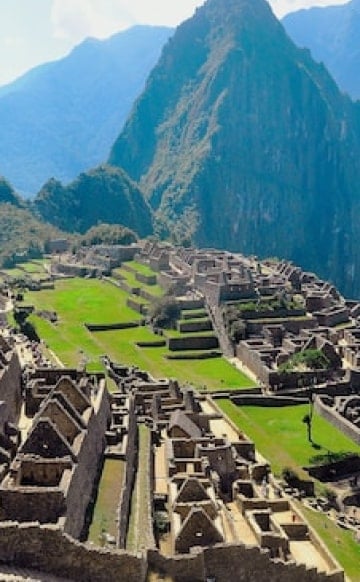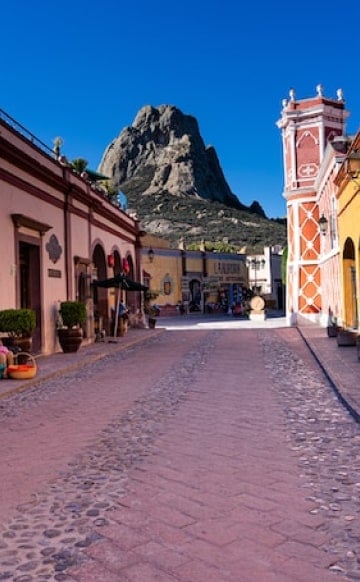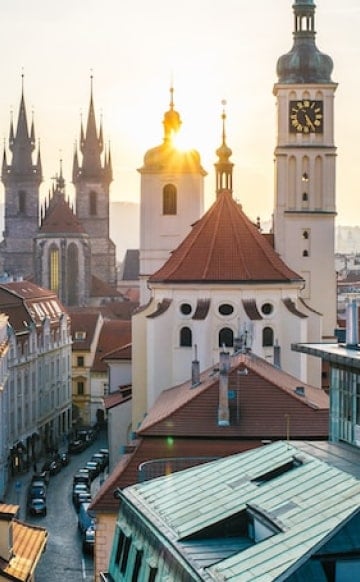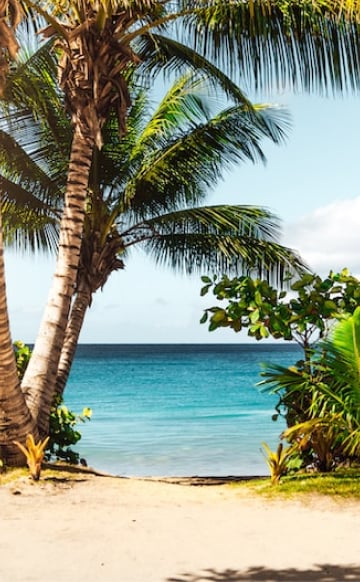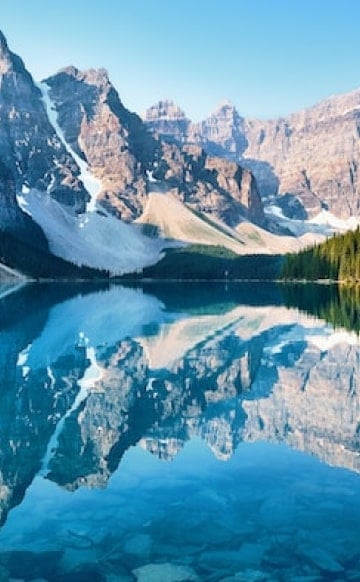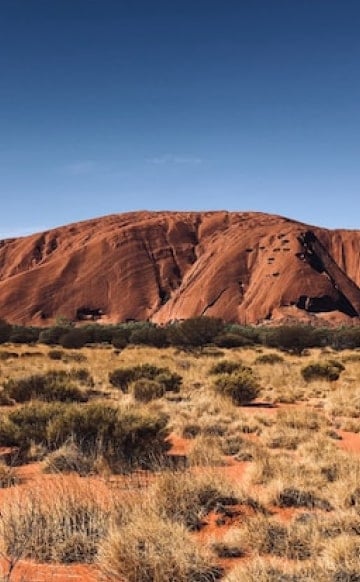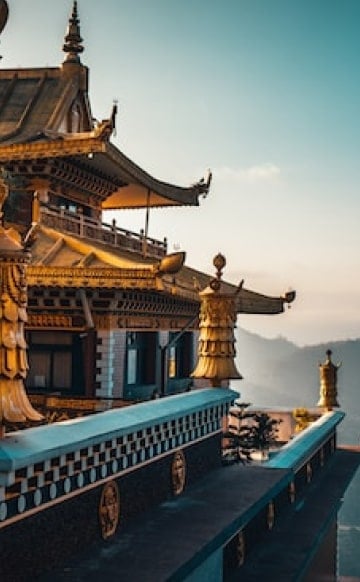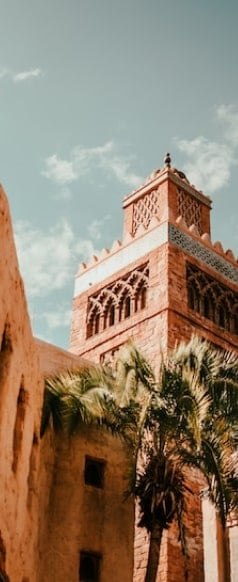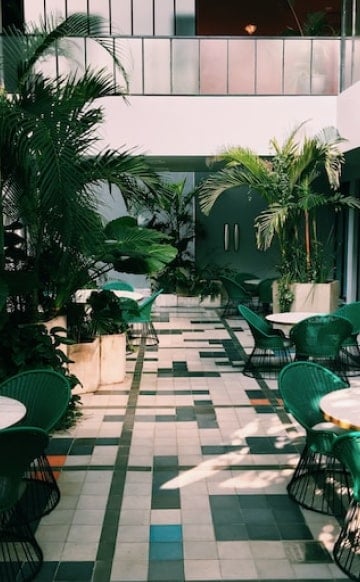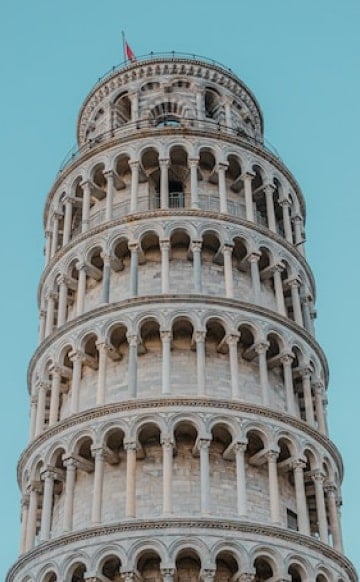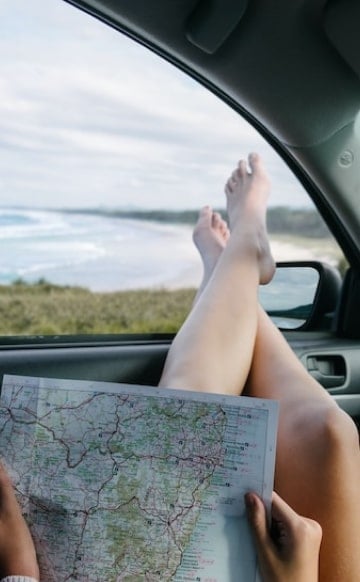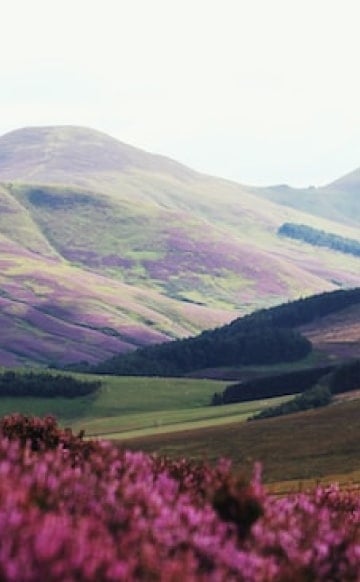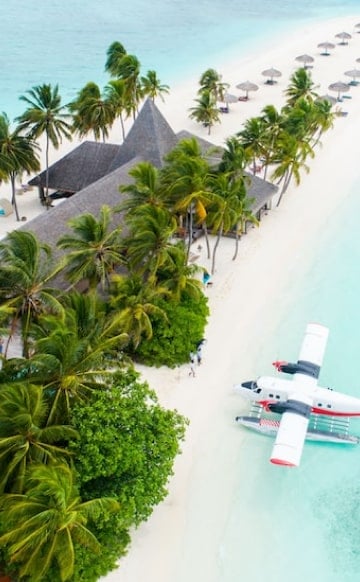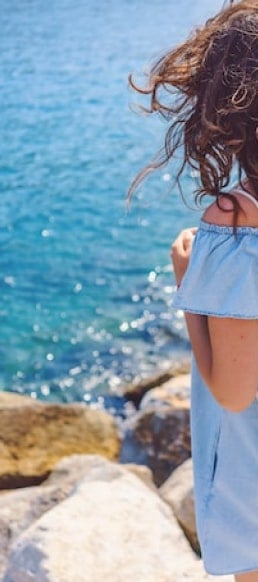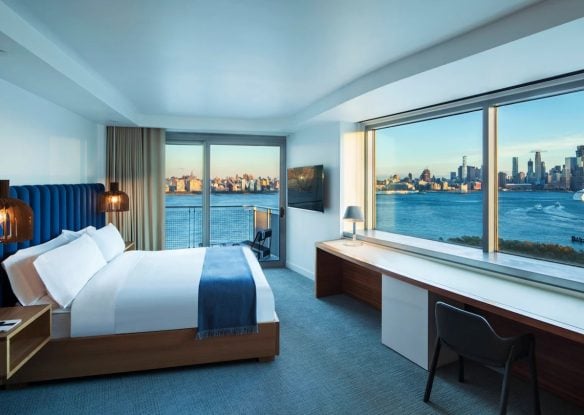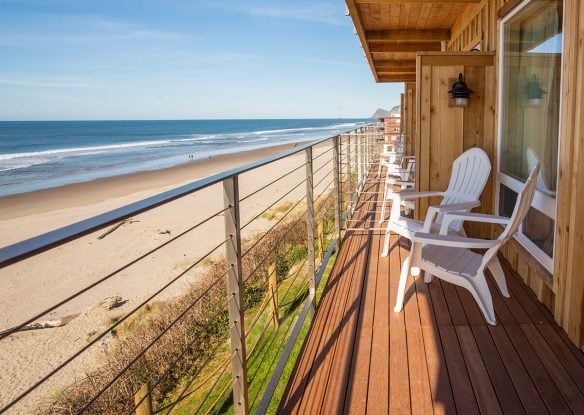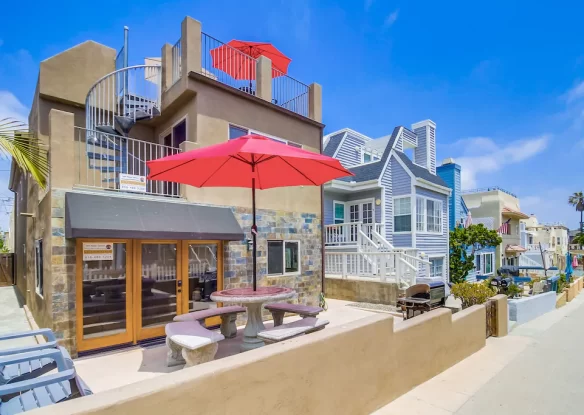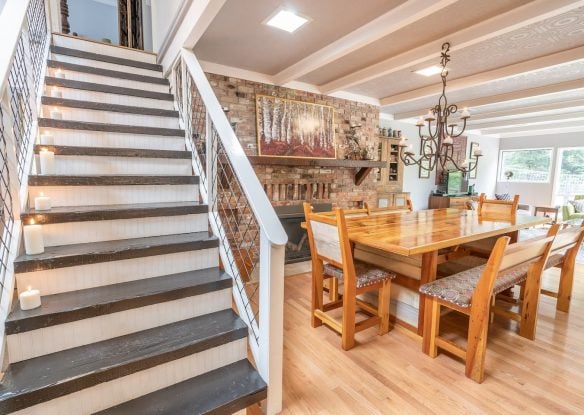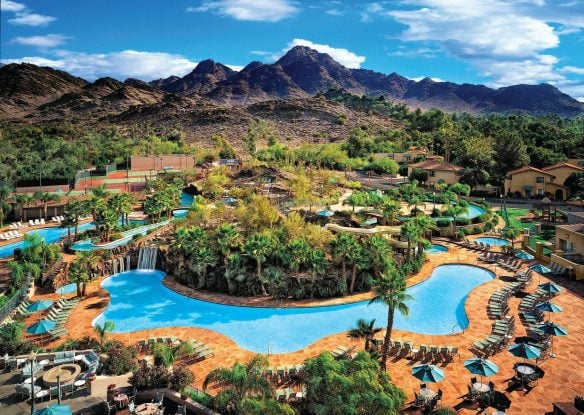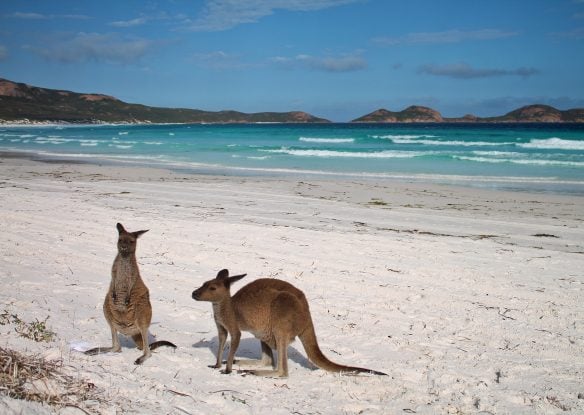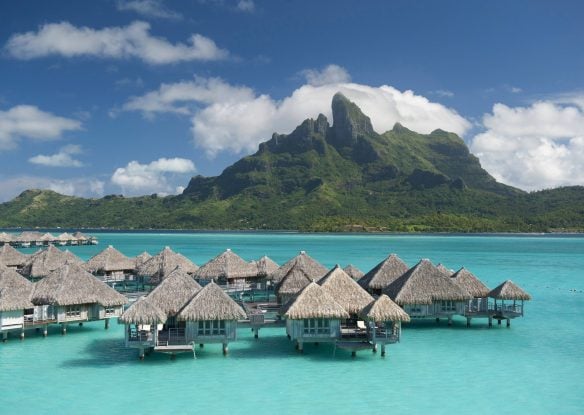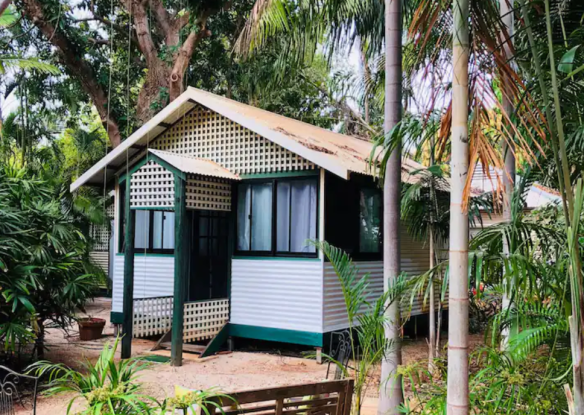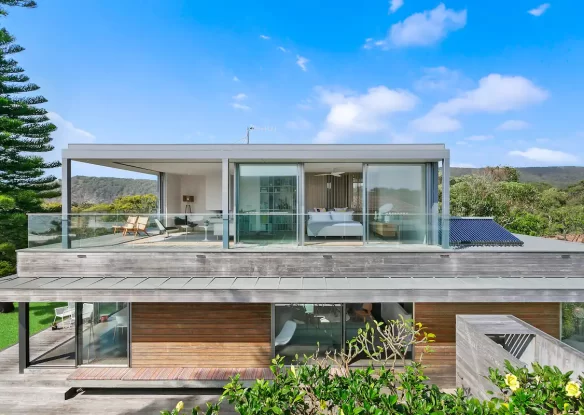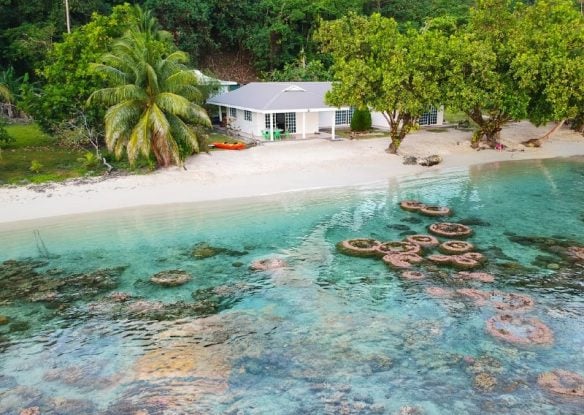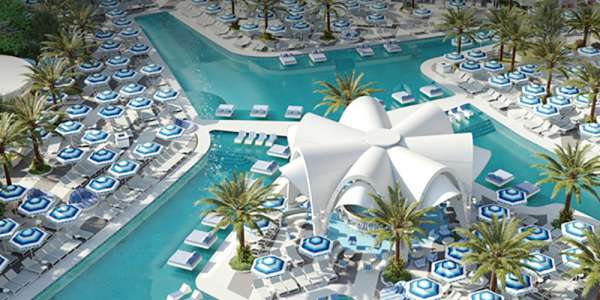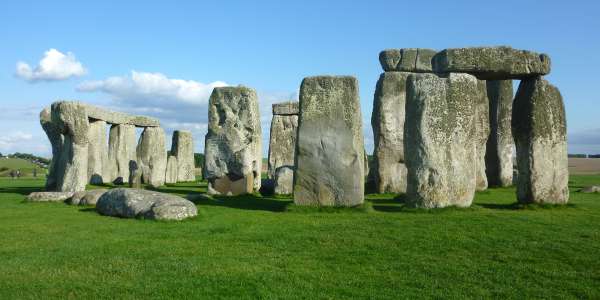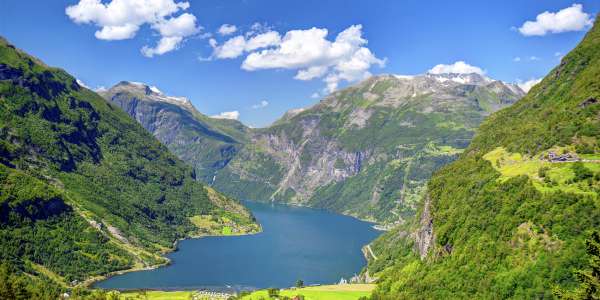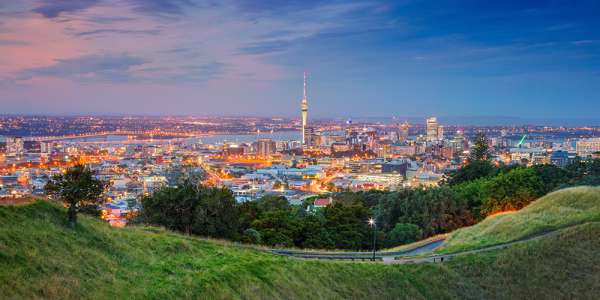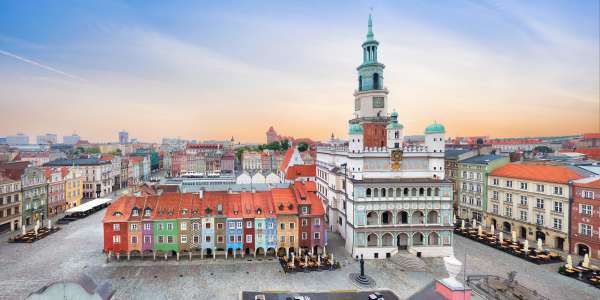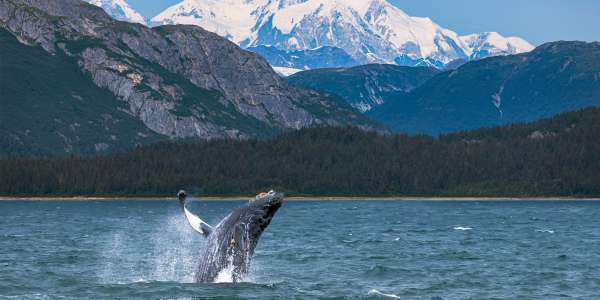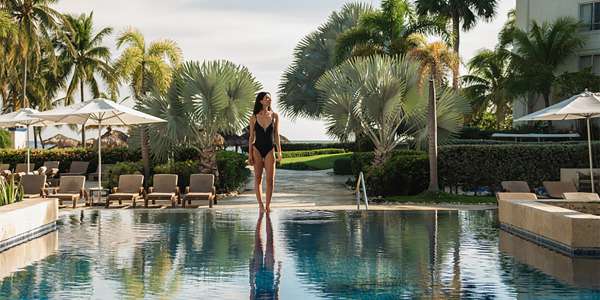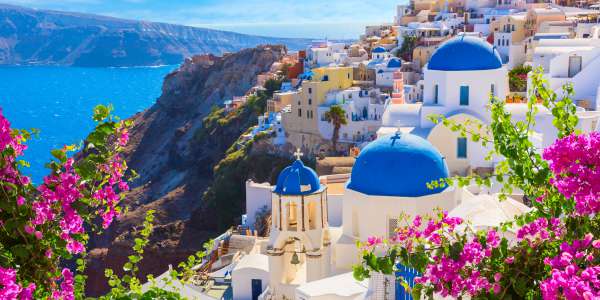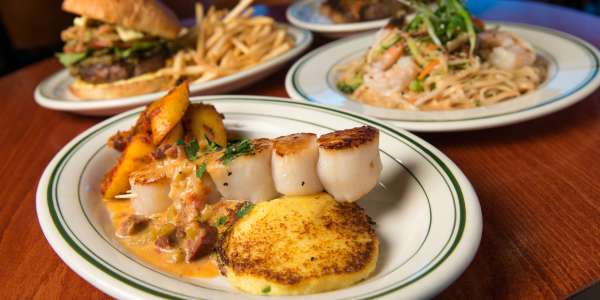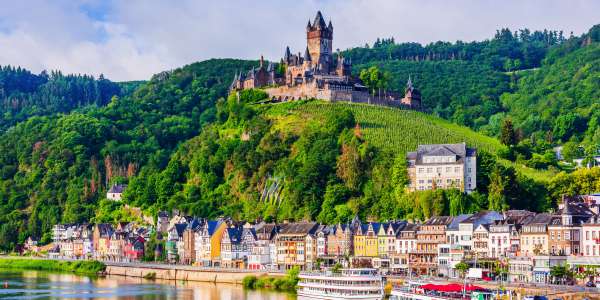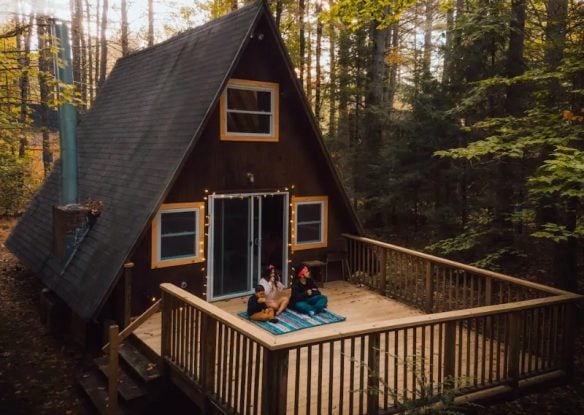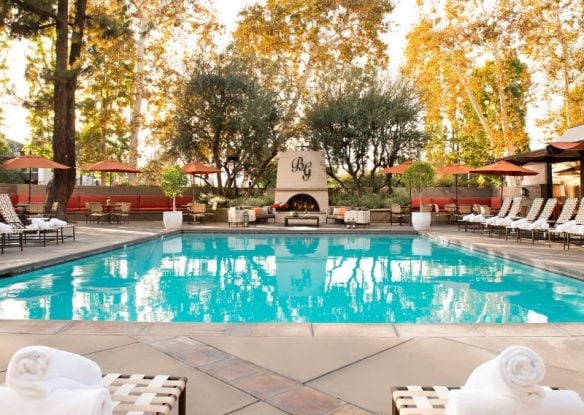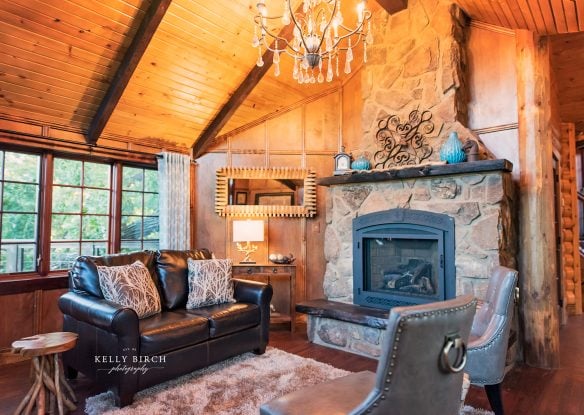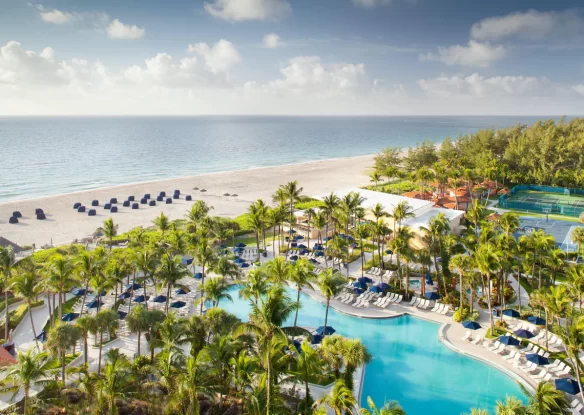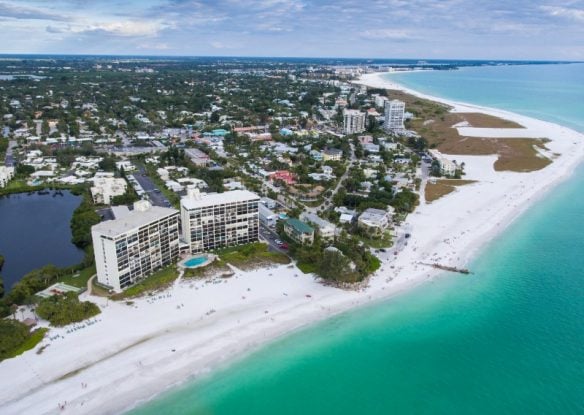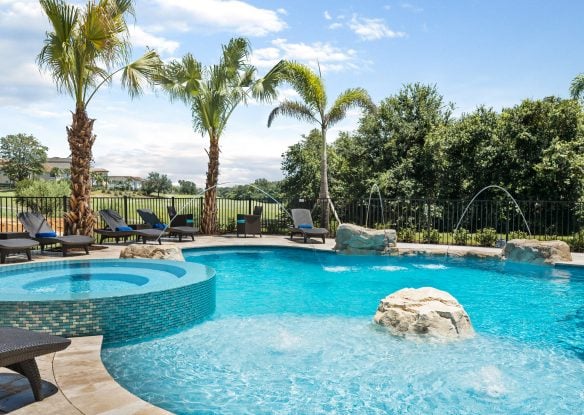Tasmania may be Australia’s smallest state, but it packs a punch when it comes to the ultimate vacation destination, buzzing with art and nurturing an exciting foodie scene – and, for outdoor lovers, this is a magical place where you can experience remarkable natural beauty, with brooding mountains, stunning beaches and what’s said to be the cleanest air in the world. If you still aren’t sure why you should go, these reasons will get you to put Tasmania on your bucket list.

Wineglass Bay
The east coast of Tasmania is home to its sunniest shores, with Freycinet Peninsula arguably its most magnificent stretch. Pristine white-sand beaches and emerald-hued waters are framed by the soaring peaks of the Hazards. At Wineglass Bay, you’ll find an especially seductive curve of beach, with the pristine sands patrolled by wallabies and dolphins frequently passing by. Camp at the end of the beach, and you’ll wake up to find yourself surrounded by a curious pademelon or two. If you aren’t up for roughing it, luxurious eco-lodge Saffire Freyncinet offers an ideal place to lie your head down at night in Coles Bay, and from there, you can take a steep, forested trail to Wineglass Bay. Saffire also offers boat trips along the peninsula where you can spot thriving seal colonies.

Port Arthur and the Prison Relics at Tasman National Park
Two hundred years ago, getting a ticket to Australia was a miserable fate, with the most harrowing final destination being Port Arthur, one of the country’s 11 penal colony sites that housed offenders from 1833 to 1853. Situated on Eaglehawk Neck, a narrow band of land connected to the rest of the island and fiercely guarded by dogs, it was believed to be inescapable. You can see Tasmania’s grim convict past encapsulated in the ruins of Port Arthur found inside Tasman National Park. Conserved as an open-air museum, you can explore the extreme form of solitary confinement that was instigated here, where prisoners were locked in total darkness, barely being sustained on bread and water for days on end. Today, the serene, pastoral setting forms a striking contrast to the Gothic structural remains which have been the site of numerous paranormal experiences. Take a tour of the former prison wings and convict-built chapel, and you’ll hear many ghost stories, along with some rather gruesome tales.

Blow Hole and Tasman Arch, Tasman National Park
While you’re in Tasman National Park, you won’t want to miss its spectacular coastal area which includes soaring nearly 1,000-feet-high dolerite sea cliffs. It’s also famous for its monumental rock formations that are easily reached by car at the southern end of Pirates Bay, like Tasman Arch and The Blowhole, unusual geological formations that are two of the state’s most visited attractions. At Tasman Arch, you can take a path that leads to a dramatic view of the coast to the south, with the Blowhole just a short drive away. You’ll also want to see Waterfall Bay, the Tessellated Pavement and Remarkable Cave. The park is home to all types of marine and land animals, including the brushtail possum, penguins, dolphins, migrating whales and Australian fur seals too.

Cradle Mountain
The silhouette of Cradle Mountain, reflected in the mirror-like Dove Lake is renowned as one of Tasmania’s greatest natural icons. This other-worldly landscape would have made the perfect backdrop for “The Lord of the Rings,” with its dolerite summit, the highest of four peaks that tower over the lake, often shrouded in mist. A hiking enthusiast’s paradise, you can lace up your boots in Cradle Mountain-Lake St Clair National Park and take a trek through the Ballroom Forest or discover Pencil Pine Falls. There is everything from easy wooden walking trails that wind around scenic spots like Wombat Pool to the especially adventurous, a five-day hike on the 50-mile Overland Trail.

Tamar Valley Wine Route
The fertile Tamar Valley in the heart of northern Tasmania just northeast of Launceston produces some of Australia’s most prestigious wines: the cool, moist climate results in outstanding pinot noir, chardonnay and riesling, as well as award-winning sparkling and dessert wines. The drive explores the majestic Tamar River which meanders for more than 100 miles through vineyard country, with more than 30 wineries within driving distance of each other. Highlights include Hollyman and Moores Hill wines at Stoney Rise, Clovery Hill and Jansz. The Josef Chromy Winery, located on a historic lakeside estate, features a tasting room and an outstanding café that serves local produce from an 1880s pioneer homestead.

MONA - Museum of Old and New Art, Hobart
The world’s most “far-out” museum, as its often been called, can be reached by taking a ferry ride up the peaceful Derwent River in the northern suburbs of Hobart. This subterranean fortress houses some of the most controversial collections of art on the planet, with death, decay and passion explored in unflinching detail. Its creator, David Walsh, didn’t want patrons to feel “small,” by walking upstairs, past pillars and being told by academics that it was culture, so, he built it underground. Visitors are given an iPod touch that uses GPS to determine which work of art they’re standing in front of before providing a running commentary from Walsh himself. What follows are three levels of steel and stone displaying exhibits like X-rated sculptures, maggot-ridden installations and a variety of art and objects based around death, sex and evolution that are at once educational, entertaining and shocking. Selections of Walsh’s private collection of antiquities are sprinkled among them, like the gold coins taken from one of the statues at the Parthenon in Athens and a 1,500-year-old Egyptian sarcophagus.

Franklin River and the Franklin-Gordon Wild Rivers National Park
The Franklin-Gordon Wild Rivers National Pak is home to the World-Heritage listed Franklin River, among other famous, wild rivers that run through the heart of the Tasmanian wilderness, along with dramatic mountain peaks and stunning gorges. Much of the landscape was shaped by ancient glaciers, and is remote and rugged – ideal for outdoor adventurers. Join a heart-pounding whitewater rafting trip with Franklin River Rafting and you can experience the surging rapids, tranquil gorges, lush temperate forests and native wildlife like wallabies, platypus, white-breasted sea eagles and yellow-tailed black cockatoos. In between water adventures, you’ll dine on a variety of exotic and traditional cuisine emphasizing fresh Tasmanian produce and herbs. Other options include hiking any of a number of walks, including the Franklin River Nature Trail, which leads through magnificent rainforest to the Surprise and Franklin Rivers and the Nelson Falls Nature Trail, a gentle stroll across boardwalk to a stunning waterfall.

Meeting the Tasmanian Devil
Many people believe the Tasmanian devil is just a Warner Brothers cartoon character, but he’s definitely real. The small, hyena-like marsupial is known for its haunting hiss that Tasmanian novelist Richard Flanagan described as a sound “like that of a woman being strangled.” While convicts initially believed they were hearing tormented souls in the bush, today, they’re a beloved icon and one that is endangered by rare cancer known as DFTD, the Devil Facial Tumor Disease. To assist in their plight, and see the devils up close, there are sanctuaries across the state like Bonorong and Devils@Cradle, where you can look into a devils den or join a guided tour through the sanctuary to learn about the devastating disease that threatens them, and possibly even get the chance to pet one of the creatures.

The Bay of Fires
The Bay of Fires in northeastern Tasmania was named in 1773 by a passing British sea captain who spotted the campfires of aborigines burning in the bush. Today, there are few signs that there were indigenous inhabitants, as they were brought to extinction in a colonial campaign, with the last full-blooded islander dying here in 1878. This slice of coastal paradise stretches more than 30 miles from Binalong Bay in the south to Eddystone Point in the north and is widely regarded as one of the most breathtaking places in the state. You can walk for miles on the sugar-like sands and swim in crystal clear waters.

Bruny Island
Take the ferry from the seaside town of Kettering, about 35 minutes south of Hobart, and you can enjoy a foodie’s paradise and much more. The island offers breathtaking scenery with idyllic beaches, enchanted forests and dramatic coastlines as well as an abundance of wildlife, including the island’s famous white wallabies and fairy penguins. More than half of the island is set aside as National Park and State Reserve, which includes rainforests and plant species not found anywhere else in the state. There are numerous secluded stretches of sand where you can enjoy relaxing as well as going for a swim. Cloudy Bay, Coal Point and The Neck are home to some of Tasmania’s best surf, hosting the “Bruny Island Classic.” You’ll find a year-round gastronomic extravaganza too, including the chance to taste decadent delights at Bruny Island Cheese Company and fresh oysters at Get Shucked. Pair the delicious offerings with a bottle of pinot noir from Bruny Island Premium Wines.

Maria Island
This magical island that sits three miles off Tasmania’s east coast, accessible by passenger ferry from the town of Triabunna, offers something for everyone, including sweeping bays, rugged cliffs and mountains, historic ruins and remarkable wildlife. It has few year-round inhabitants and is entirely car-free, though bikes are available to rent for traversing bush trails and visiting evocative ruins, including Darlington, a ghost town with a convict and industry past. View the Painted Cliffs at Hopground Beach, beautifully patterned sandstone that was shaped by the elements over centuries, and the former limestone quarry at Fossil Cliffs which offers a fascinating look at the many ancient creatures who were immortalized as fossils in the rocks. Watch for wildlife around the island, including 11 of Tasmania’s 12 endemic species, like the forty-spotted pardalote and the rare Cape Barren goose. Wombats, pademelons, Bennetts wallabies, Forester kangaroos and Tasmanian Devils can all be seen, and in the surrounding waters, whales and seals frequently pass by.

Fairy Penguins in Bicheno
Bicheno is another nature lover’s delight. Every night at dusk, tiny penguins pop out of the waters of the bay and waddle ashore to their burrows. The best way to see them is to take a guided walk. Bicheno Penguin Tours, established by locals to protect the penguin population, lets you get up close to them without disturbing the tuxedo-wearing animals. They’ll even hop between your legs and curiously peck their beaks at your toes – just don’t wear any type of open-toed shoes. Offshore, you can explore one of Australia’s best diving spots, the Governor Island Marine Reserve, with its spectacular sponge gardens and kelp-covered reefs. If you’d prefer to stay above water, you can experience it via a glass-bottomed boat or kayak.

Cataract Gorge
Just 10 minutes west of Launceston’s city center is spectacular Cataract Gorge. You’ll enjoy awe-inspiring views of the bushland, cliffs and the South Esk River, and from the longest single-span chairlift in the southern hemisphere, you can take in a birds-eye view of the forested hillsides. There’s even a free outdoor swimming pool open from November to March at First Basin, as well as summer concerts and chatty peacocks. You’ll also find two walking trails that straddle the gorge, including the steep Zig Zag Track and the level Cataract Walk. Just upstream from First Basin, you can tiptoe across the Alexandra Suspension Bridge.

Mount Wellington
Just a 20-minute drive from Hobart and you can enjoy the ultimate wilderness experience of Mount Wellington. Along the way to the summit, you’ll pass through temperate rainforest, subalpine flora and glacial rock formations before culminating with the panoramic views of Bruny Island, South Arm, the Tasman Peninsula and Hobart. Take in the incredible vista from the interpretation center at the top, with its open viewing platform looking out to the southern World Heritage area and beyond. There are also a number of bushwalking trails, suited for all levels of fitness, along with picnic and barbecue facilities.

Mole Creek Karst National Park
Mole Creek National Park is renowned as the home of Tasmania’s most amazing, and accessible, caves. It boasts incredible stalagmites, stalactites and columns as well as glow worms, cathedral-like caverns and subterranean streams. There are more than 300 caves here, including the King Solomons and Marakoopa caves, two of the most popular and most accessible. Marakoopa boasts the largest display of glow worms in any publicly accessible cave in Australia, along with two underground streams. The “Great Cathedral” includes dazzling crystals, while the “Gardens,” is made up of stunning colors and delicate formations. The park also has beautiful forests, bushwalking tracks and camping facilities.

Stanley
Famous for its platypus and penguin tours, the historical village of Stanley is located on the tip of the peninsula in the far northern reaches of Tasmania. It’s filled with perfectly preserved colonial buildings and charming cafes that are sheltered in the imposing shadow of the Nut. The nearly 500-foot-high geological feature, the core of an extinct volcano, looms above the village and can be seen from many miles away. At the top, you’ll enjoy fantastic views of Stanley and Bass Strait. You can also take a history tour through the town’s streets lined with quaint stone cottages that date back to its early days when it hosted the headquarters of the Van Diemen’s Land Company. Many of the historic properties were restored and now operate as B&Bs, cafes and shops. There is also a seaquarium, the chance to watch for whales and go diving among the colorful coral reefs at Rocky Cape National Park.

Salamanca Market, Hobart
Set between graceful plane trees and mellow sandstone facades of historic warehouses, this famous waterfront bazaar at Salamanca Place is Australia’s best outdoor market. Open every Saturday, there are more than 300 stalls offering all types of fresh produce, other food and wares like vintage bric-a-brac, curry, comics, crystals and fine Tasmanian art & craft, including bold ceramics, hand-worked glass and stylish clothing. Visitors also enjoy a variety of entertainment with buskers that gently stroke a harp, sing the blues or strum a folk tune. Cross Salamanca lawns to the working docks at Sullivans Cove where ships come and go to Antarctica and fishing boats sit next to massive cruising yachts and tall-masted wooden vessels.

Southwest National Park
The largest protected reserve in Tasmania covers 20 percent of the island. The best way to get there is via a charter flight from Hobart Airport. Along the way, you’ll enjoy bird’s eye views of the wave thrashed cliffs of South Cape as well as Port Davey and Bathurst Harbour before landing on the dirt runway in Melaleuca. Few roads lead to this vast, remote corner of Tasmania, a landscape of jagged ranges, dense rainforests and buttongrass plains, surrounded by two huge hydro lakes to the north and windswept shores to the south. The Gordon River and Scotts Peak roads in the north of the park run along the north and east shores of Lake Pedder; in the south-east of the park, the most southerly road in Australia ends at Cockle Creek. The northern access to the park is known as one of the state’s great drives, lined with sassafras, celery top pine and towering myrtle. Lookouts along the way offer the chance for encounters with local birds like wrens, thornbills, honeyeaters, scarlet and flame robins. In addition to sight-seeing flights and scenic drives, multi-day wilderness treks, short walks and kayak adventures provide other options for exploring the park.

Lavender Fields at Bridestowe Estate
If you visit Tasmania in December or January, you’ll have the chance to run through the gorgeous lavender fields at Bridestowe Estate. One of Tasmania’s most stunning sights, the vistas span across more than 260 acres of lavender fields, landscaped gardens and native forest to the distant Mount Arthur. A visitor center offers unique products that contain the estate’s famous lavender oil, like massage oil, luxurious bath milk and scented potpourri. You can even sample a delicious array of lavender inspired and infused delicacies at the Woodcroft Café, like lavender brownies and lavender ice cream.

Tahune Forest Airwalk
The nearly 2,000-foot-long walkway through the treetops at Tahune on the edge of the South West Wilderness allows visitors to walk among the giants of the forest, the home of some of the tallest trees in the world, enjoying breathtaking forest canopy views as well as swinging bridges across the Picton and Huon Rivers. The highlight of the walk is a cantilever that sits over 156 feet above ground providing especially dramatic vistas. Afterward, visitors can enjoy Tasmanian food and wine in the onsite café.

Golfing at Barnbougle Lost Farm
Golfing enthusiasts can golf one of the most scenic courses in the world in the north region of Tasmania. It’s a popular spot for international jet setters who arrive via private jet, though it’s open to the public for anyone to play. Set along the magnificent northeast coast where stark beaches fold into undulating farmlands, the course was crafted out of an extraordinary landscape as a destination that resonates with the game’s connection to Ireland and Scotland.

